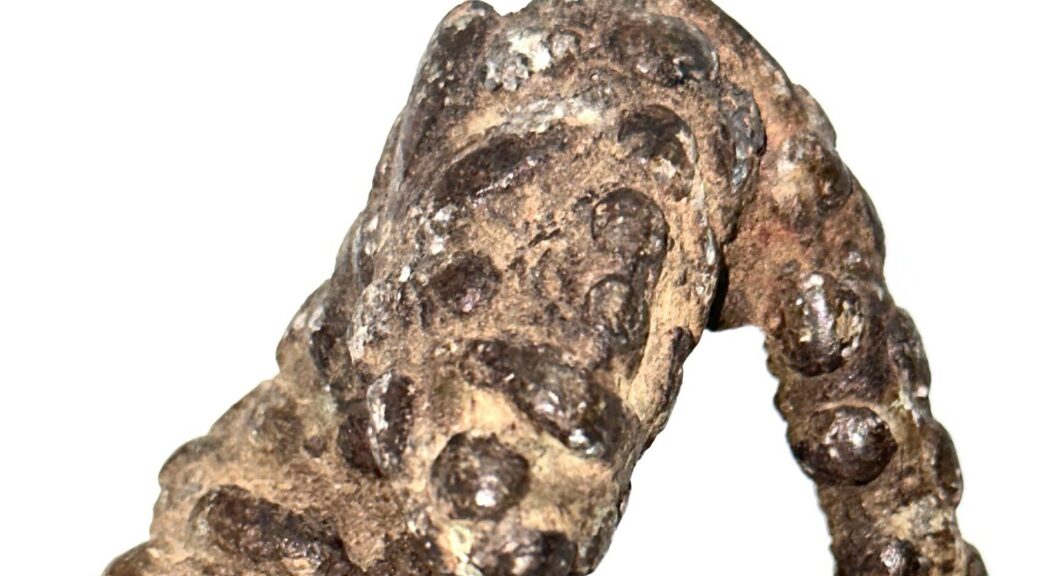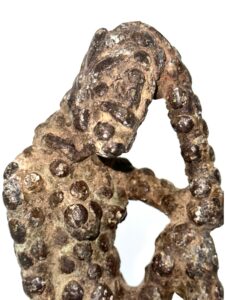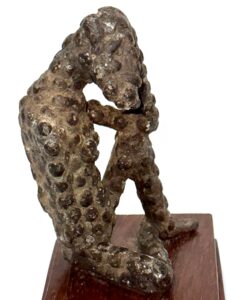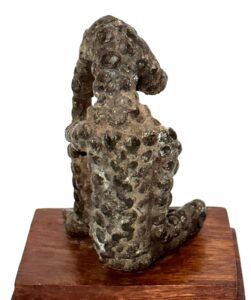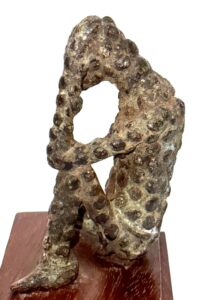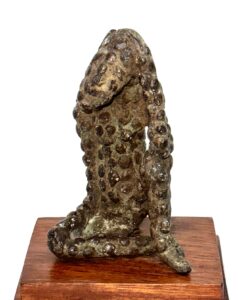MAK 1122-11
Djenne ‘Thoughtful’ bronze figure, Mali
Among the earliest known examples of art from sub-Saharan Africa are bronze figures like this one from the inland delta of the Niger River, near the current home of the Dogon and Bamana peoples.
The figure shows a person seated, with the left arm supporting the raised leg, the head tilted to the side to rest against the left palm supported by the bent knee. The pose evokes a pensive attitude, enhanced by the expressiveness of the facial features: the protruding chin and protruding mouth are all stylistically characteristics of works from this region.
In this region of Mali, the ancient city of Jenne-jeno (“Old Jenne”) flourished as a center of agriculture, trade, and art from the middle of the first millennium until about 1600. Bronze figures associated with this civilization represent men and women, singular and in couples, in a variety of attire and poses, including seated, kneeling and on horseback. The variety of images and the skill with which they were modeled reveal the rich sculptural heritage of a sophisticated urban culture.
The surviving figures vary in style and subject, suggesting that the sculptors had considerable artistic freedom. Our understanding of the use and meaning of such works remains speculative. A few controlled archaeological excavations have revealed similar figures. Oral history collected recently in the region supports the archaeological evidence, as the figures are said to have been venerated in special shrines and private homes. However, there is little consensus about the meaning of the different types of figures. Scholars have suggested that this figure conveys an attitude of mourning. The seated posture, shaved heads and lack of clothing are reminiscent of mourning customs still practiced by some in this region of West Africa.
The figure stems from Djenne, a town and commune founded in the year 800 in Mali in East Africa, a town at the interface of the mobile and sedentary world. It is located 130 km from Mopti and 500 km by boat from the caravan town of Timbuktu to which it is linked commercially by the river delta.
Djenne means ‘water spirit’ in Bozo language, a language spoken by the Bozo people, the principal fishing people of the region.
Often sculptures and figures like this one are related to stories about ancestors, the tribe’s culture and traditions through ritual practice, eventually it serves as protection or rituals about going from childhood to adulthood, a child being born and death.
When looking at this bronze figurine one’s thoughts are inevitably drawn towards the world-famous French sculptor Auguste Rodin’s sculpture ‘The Thinker’ from the late 19th century.
Age: Period between the first half of the thirteenth century and the end of the fifteenth century.
Measure: H: 11,5, W: 7, D: 6,5 cm – Weight: 650 grams
Condition: The figure is without any kind of damage and with its discreet blue-green vertigo in top quality.
Provenience: Parisian gallery ex private French collection, assembled in situ during the 1950s
Request price for Djenne Bronze